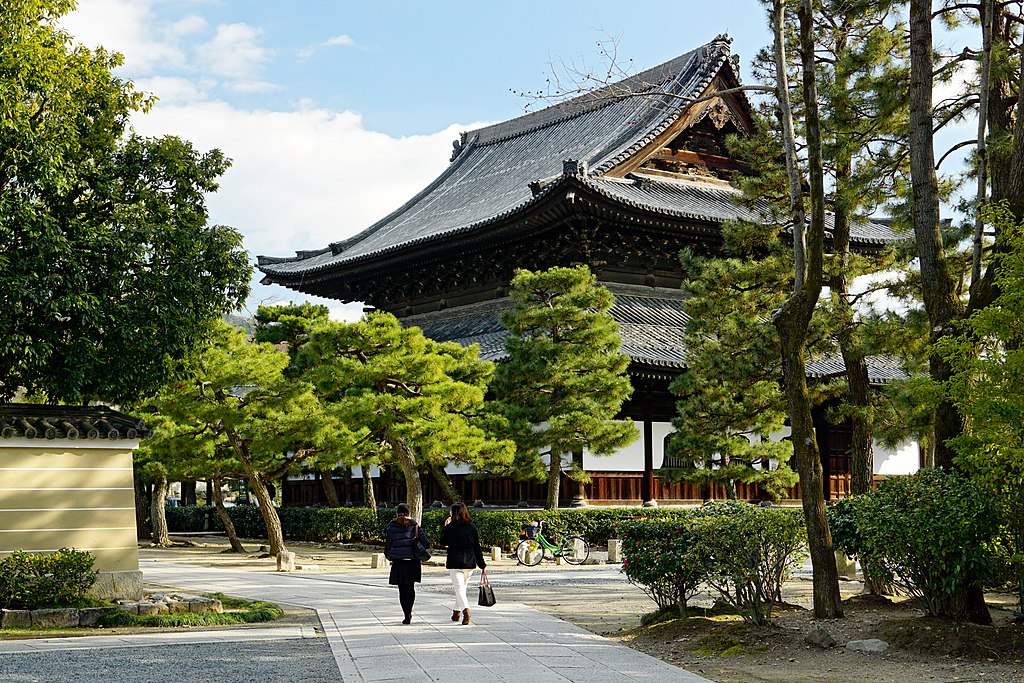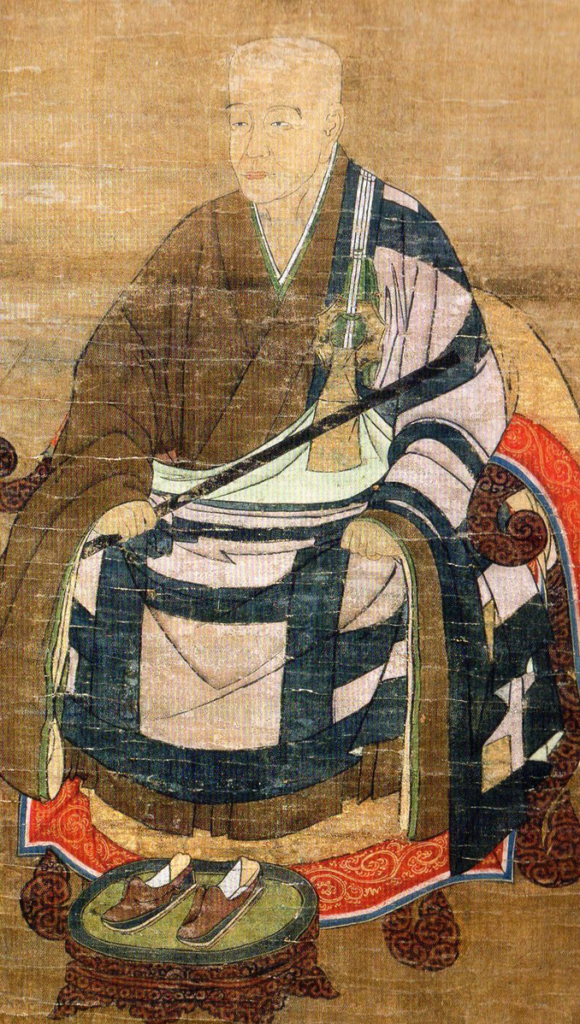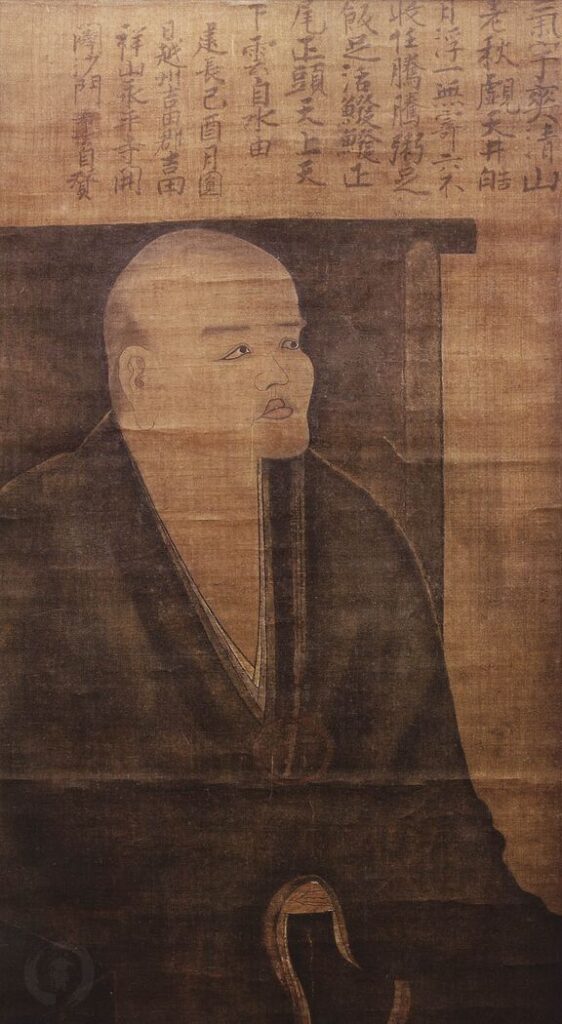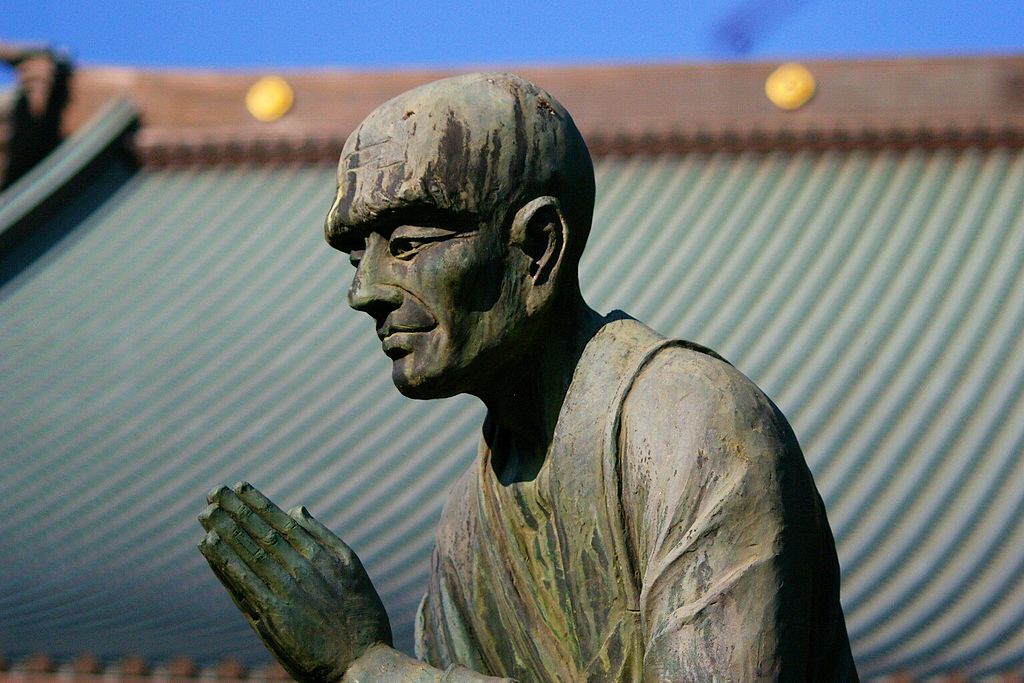
Buddhist cultivation methods can be broadly distinguished into two types: “samadhi through continual sitting (meditation in stillness), and samadhi through continual walking (meditation in motion). The former concentrates one’s thought on the interior of the mind by placing the body in an immovable (still) position, while the latter trains one to look into the interior of the mind by placing the body in continual motion” (Yuasa Yasuo).
Yuasa begins this section with a clarification of the concept of gods and buddhas in Mahayana Buddhism. They are obviously not similar to the “things/events” that we encounter in our everyday lives. But neither are they supernatural beings living in a heavenly realm. Narratives depicting them as such are upaya (skillful means) meant to help individuals who find it difficult to understand conceptual abstract or metaphoric language, and feel more comfortable with narratives, such as parables or concrete human stories. For the educated, it can be said that gods and buddhas are “images within one’s mind. Therefore, when they are examined psychologically, they may be regarded as an autonomous power existing latently in the unknown region of the unconscious, which are projectively understood as entities existing independently of consciousness.” These are still received from outside consciousness, but from the unconscious within us, rather than forms shaped by the structures of our consciousness, as Kant could have said. And “when those images are idealized, they take on the forms of Buddhas and gods. The numerous Buddhas and gods in Eastern religions are classified into various levels with their corresponding characteristics, and generally speaking, they represent perfected stages of the ideal human spirit. Meditative training concentrates the power of consciousness on these ideal, perfected stages, and integrates unconscious energy, functioning independently of consciousness, into these ideal states. When this takes place, the power of the unconscious region will be activated and become alive for consciousness, leading the cultivator into a world of experiences hidden from everyday consciousness.”
You might wonder how these images representing perfect stages of the ideal human spirit found their way into our unconscious. Coming back to Heian Buddhism, Yuasa writes that it “often uses a technique of artificially creating visual images (states of so-called visual and other hallucinations) through the active imagination. For ex., in the case of “samadhi through continual walking (meditation in motion), the mind is constantly concentrated on a Buddha, while one orally recites a mantra and places the body in constant motion. In other words, it integrates unconscious energy by activating it through repetition of a specific bodily movement.”
Acquired mind-body unity
Yuasa then asks: How then does this training change the mind-body relationship? The short reply is: through acquired mind-body unity. Since in Asian philosophical thinking mind and body are already assumed to be intrinsically connected, the goal could not be to connect them but instead “to make the overlap ever greater, with the ideal being the unity of bodymind” (Thomas Kasulis). The appropriation of what the mind thinks by our everyday consciousness will go through the route of training the body through repetition. One could say that it is what learning by rote does with speech extended to the whole body with continual walking or sitting.
Body-mind oneness in Japanese Buddhist traditions

Yuasa writes: “Zen Buddhism often uses the phrase “body-mind oneness” [shinshin ichinyo).” This phrase appears among historical Japanese texts as early as Eisai’s Kozen gokokuron (Discourse on Promoting Zen and Protecting the Country). He refers to a deepened state of meditation after entering into samadhi as “all engagements are discarded, everything is put to rest; in body-mind oneness there is neither movement nor stillness.” Dogen who may have met Eisai, a Rinzai Zen teacher, before traveling to China, and founding the Soto Zen school, also emphasised the need to discard all engagements in order to turn the attention of the practitioner to the inner world, and there, activate the unconscious. “We find in Dogen’s fascicle “Zazengi” [Rules for Meditation] in Shobogenzo a description of the preparatory attitude for doing seated meditation. Echoing Eisai’s characterization, Dogen states, “‘Discard all engagements, and put everything to rest. Think neither evil nor good’.” Seated meditation is not an operation of consciousness. Discard all engagements, and put everything to rest” means to abandon the attitude of mind directed toward the thing-events of the external world … In situations of everyday life, our attention is drawn to the thing-events of the external world” and “we make judgments” thus creating “the distinction between good and bad (which is contrary to Dogen’s words, “think neither good nor evil”).By stopping all such conscious judgments, meditation delves exclusively into the inner world of the psyche. Viewed psychologically, it is a technique for controlling unconscious functions by weakening the functions of consciousness which respond to stimuli from outside, and for redirecting the energy of the mind into its interior in order to activate the unconscious. When a meditator continues training for a long period of time, wandering thoughts disappear, and the mind, become empty, experiences the state of samadhi in which there is no consciousness of an “I.”
“Kensho” and “satori” as respectively first experience and realisation of body-mind oneness
Yuasa writes: “In Zen Buddhism there is the term “kensho” (seeing into one’s own nature). It designates the initial experience of satori, which is the first experience of a transformed state of consciousness. Although the terms “satori” and “samadhi” encompass various phases and stages, generally speaking they correspond to the states of “no-mind”[mushin] and “no-self” [muga]. They include such ecstatic experiences as not being able to determine where one’s body is, and the state in which one’s consciousness leaves the body (= out of the body experience). It is difficult to generalize, but some experiences accompany hallucinations and others do not. Eisai refers to these kinds of experience as “body-mind oneness” [shinshin ichinyo]. Myoe (1173-1232) uses the phrase “body-mind crystallization” [shinshin gyonen] in Yume no ki [The Record of Dreams], which contains the record of his own cultivation experiences. Interpreted philologically, “body-mind oneness” [shinshin ichinyo] designates a state in which mind and body become as one without separation, and “body-mind crystallization” [shinshin gyonen] designates a state in which both the mind and body congeal into one.”

At the level of everyday consciousness one perceives a separation between one’s body sensations and what’s happening in our minds. So, Yuasa writes: “Expressions such as “body-mind oneness” and “body-mind crystallization” probably designate states in which the mind and the body become one when the multifarious movements of the mind disappear.” Dogen’s expression – “shinji datsuraku” (casting off body and mind) also probably refers to a felt lack of distinction between mind and body.
Difference between bodily sensation on one hand, and thinking & emotion, on the other
Yuasa goes deeper into the differentiation between bodily sensation and mental states at the level of everyday consciousness. He writes: “In our ordinary state of consciousness, bodily sensation is experienced as different in kind from the narrow sense of mental states such as thinking and imagining. Bodily sensation refers to the sensations we have of the conditions of our hands, legs, or internal organs, etc … Broadly speaking, bodily sensation belongs to consciousness and in this respect is a state of the mind, but functions indigenous to the mind, such as thinking and emotion, are experienced as activities different from bodily sensation. Even though no change occurs in bodily sensation in the initial phase of meditation, wandering thoughts arise one after another. In such a state, body and mind are felt to be distinct. An ecstatic state is an experience in which this distinction has disappeared.”

Meditation in motion and meditation in stillness equally can lead to an ecstatic state: “Meditation in motion is a method of achieving an ecstatic experience, as is the case of meditation in stillness, through constant repetition of bodily movement. We may cite the “dancing nenbutsu” [odori nenbutsu] initiated by Ippen (1234-1289] as a relatively easy example for understanding this point. “Dancing nenbutsu tales the form of continuously dancing, swinging hands and legs, while reciting the phrase “namu amidabutsu” (I entrust myself to Amitabha Buddha).” Young people dancing in a club can, similarly, experience an ecstatic feeling. And one cannot fail to also mention the practice of whirling dervishes in Islam as well as the use of drums and dance in shamanic cultures. Although Western Christianity has, in effect, cleansed its Sunday morning services of anything remotely associated with the body, it should be noted that Christians of African origin have reintroduced rhythmic music and dance into their Sunday Sundays, and even in their funeral ceremonies.
Source:
Yuasa Yasuo – The Body, Self-Cultivation, and Ki-Energy

